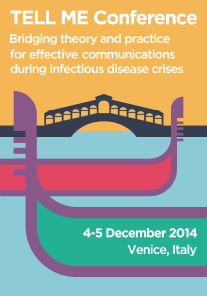MERS threat outside the Middle East: will transparency help?
The first known cases occurred in Jordan in April 2012. Two years later, the Middle East Respiratory Syndrome Coronavirus (MERS-CoV) reached the United States. The first American case, confirmed on May 1 2014 by the Centre for Disease Control and Prevention (CDC), is a traveler landed in Chicago from Saudi Arabia and now recovered in a hospital in Indiana. Just a week before, the Ministry of Health of Egypt reported the first laboratory-confirmed case of MERS-CoV infection in the country.
On April 30 2014, the European Centre for Disease Prevention and Control (ECDC) reported 424 laboratory-confirmed cases of MERS-CoV infection worldwide, 131 of which were lethal. The vast majority of cases – 342, with 105 deaths – occurred in Saudi Arabia, while United Arab Emirates, Qatar, Jordan, Oman and Kuwait totally accounted for 58 cases and 19 deaths. Outside the Arabian Peninsula, the virus reached several European countries – United Kingdom being the one with more confirmed cases, 4 with 3 deaths – and even Malaysia and Philippines. An online map, showing the number and the geographical distribution of MERS-CoV confirmed cases, has been developed and is updated regularly.
These numbers are quite alarming, especially if compared with those reported on the previous week: 345 cases worldwide, 107 of which lethal, as of April 24. Which means 79 new cases – almost 23% of the total – identified in just a week. In general, MERS-CoV hit hard in April, as shown in the figure.
Although the causes behind this recent and rapid increase are still unknown, ECDC experts managed to identify some possible explanation for such a surge. One reason could be an improvement in case detection, maybe due to a recent change in the screening protocol. However, the lack of detailed information supported by Saudi authorities does not allow to draw firm conclusions about the extent of changes in protocols and their impact on the number of reported cases. Another hypothesis is that of an increase of MERS-CoV transmission from animals to humans. There is growing evidence that the dromedary camel is a host species for this novel coronavirus and that it may play a significant role in the transmission to humans. The risk of getting infected through direct or indirect camel contact exists but it is difficult to quantify in the absence of evidence.
Concerns have been raised about the high degree of diffusion of the infection among healthcare workers, which may be due to a change in the virus that could have resulted in a higher human-to-human transmission rate, but also to a breakdown in infection control measures. ECDC asked for further efforts aimed to describe and determine modes and sources of transmission for MERS-CoV, to improve the management of patients, to ensure an appropriate standardization of serological tests, and to submit an adequate numbers of virus isolates to publicly available databanks.
Also, ECDC asked for timely and transparent risk communication practices in affected areas, an issue that has been raised due to the initial choice of the Saudi Ministry of Health to maintain the silence. However, such a lack of transparent information from the kingdom led to skepticism and confusion; rumors of incompetence, coverups and lost records fed on silence and spread quickly, thus leading to a loss of credibility by the Saudi institutions. The high number of cases amongst healthcare workers also caused some people to be worried about going to hospitals for their appointments and raised concerns, fueled by rumors swirling on social media, about inadequate hygiene procedures in some hospitals.
In order to stop the spreading of rumors, at the beginning of April, the Health Minister Abdullah al-Rabeeah opted for a reassuring approach. However, such a message has been perceived as an attempt to downplay the seriousness of the situation and had an opposite effect on Saudi public opinion. Minister al-Rabeeah was removed on April 21 and his duties were taken over by the Labor Minister Adel Fakeih, who immediately changed strategy and expressed concern about the situation, pledging to uphold the principles of transparency and disclosure. Fakeih also encouraged officials to make more field visits, in order to ensure a proper healthcare response to this crisis.
Being the keeper of the two holiest places in Islam – the Grand Mosque in Mecca and the Prophet's Mosque in Medina – Saudi Arabia has a great challenge to face. Many pilgrims are expected in July during Ramadan and millions more will gather in the country in early October for the Hajj, the annual pilgrimage to Mecca, the largest gathering of Muslim people in the world. Clearly, a fast-spreading and potentially lethal disease like MERS-CoV would represent a serious threat for all these pilgrims.
This is the reason why several international voices cried out for more transparency from Saudi authorities. On April 25, the Washington Post editorial board recalled the lesson learned by Chinese government with SARS in 2003, when secrecy and reassurance from the authorities caused a high cost in terms of human health and welfare.



